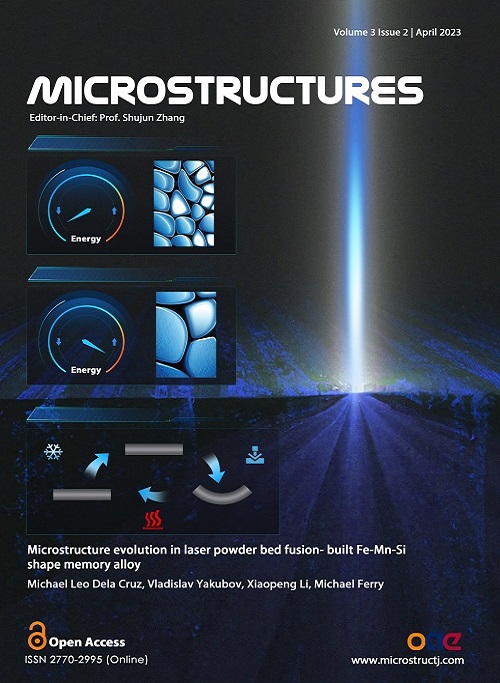Volume 3, Issue 2 (April, 2023) – 8 articles
Cover Picture: The need for specialty powder composition limits the processing of a wide range of alloy products via the laser powder bed fusion (LPBF) technique. This work extends the adaptability of the LPBF technique by fabricating the first-ever Fe-30Mn-6Si (wt.%) product for potential use as a biodegradable shape memory alloy (SMA). Different LPBF processing parameters were assessed by varying the laser power, scan speed, and the laser re-scan strategy to achieve a fully dense part. The microstructure was found to respond to the processing conditions. For example, the microstructure of the parts produced by the high linear energy density (LED) had a columnar and strong crystallographic texture, while in the low LED, the parts were almost equiaxed and had a weak texture. To explain the evolved microstructure, the thermal history of the LPBF products was computed using the finite element analysis (FEA) of the melt pool gathered from a single-track laser scan experiment. The FEA results showed a varying temperature gradient, cooling and solidification rates, and temperature profile as a function of LED. Then, the relationship of hardness between grain size, phases present, and crystallographic misorientation of the LPBF-built alloy was analysed with reference to a control alloy of similar composition but prepared by arc melting. This study validates the LPBF processability of Fe-Mn-Si SMA and provides a new insight into the influence of processing parameters on the formed microstructure and hardness.
view this paper
Read Online Viewed:
Download This Issue Viewed:






